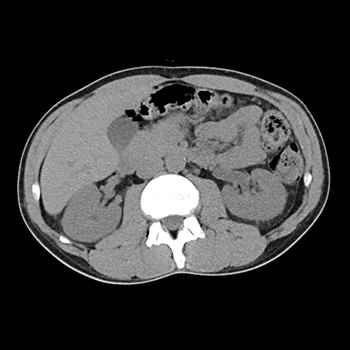Keywords
Appendicitis, debiasing, anchoring, lower abdominal pain, appendectomy
Abstract
Very often in clinical practice, an inflamed pelvic appendix shows left lower quadrant abdominal pain as the primary painful area. The clinicians are anchored to the most prominent symptom, thereby taking an unnecessary detour in reaching an accurate diagnosis.
A 40-year-old man presented to our emergency department with persistent lower left abdominal pain with a fever of 38 oC from a day earlier. He had a good appetite and repeatedly complained of severe constipation at the time of his visit. Physical examination revealed tenderness in the lower left abdomen without a peritoneal sign. Abdominal ultrasound and non-contrast-enhanced computed tomography revealed a left hydroureter. The next day, a radiologist pointed out the possibility of appendicitis. An urgent laparoscopic appendectomy was performed.
The intriguing point of this case is the diagnostic delay because of three anchoring biases. First, the typical right lower abdominal pain of appendicitis was shielded by the intense left lower abdominal pain. Moreover, the presence of a left hydroureter distracted the physicians from the actual location of the pain. Furthermore, the presence of constipation anchored the physicians to constipation as the cause of abdominal pain.
In overcoming these biases, specific diagnostic strategies to avoid biases should be implemented.
References

Views: 330
HTML downloads: 50
PDF downloads: 185
Published:
2022-11-09
Issue:
2022: Vol 9 No 11
(view)










